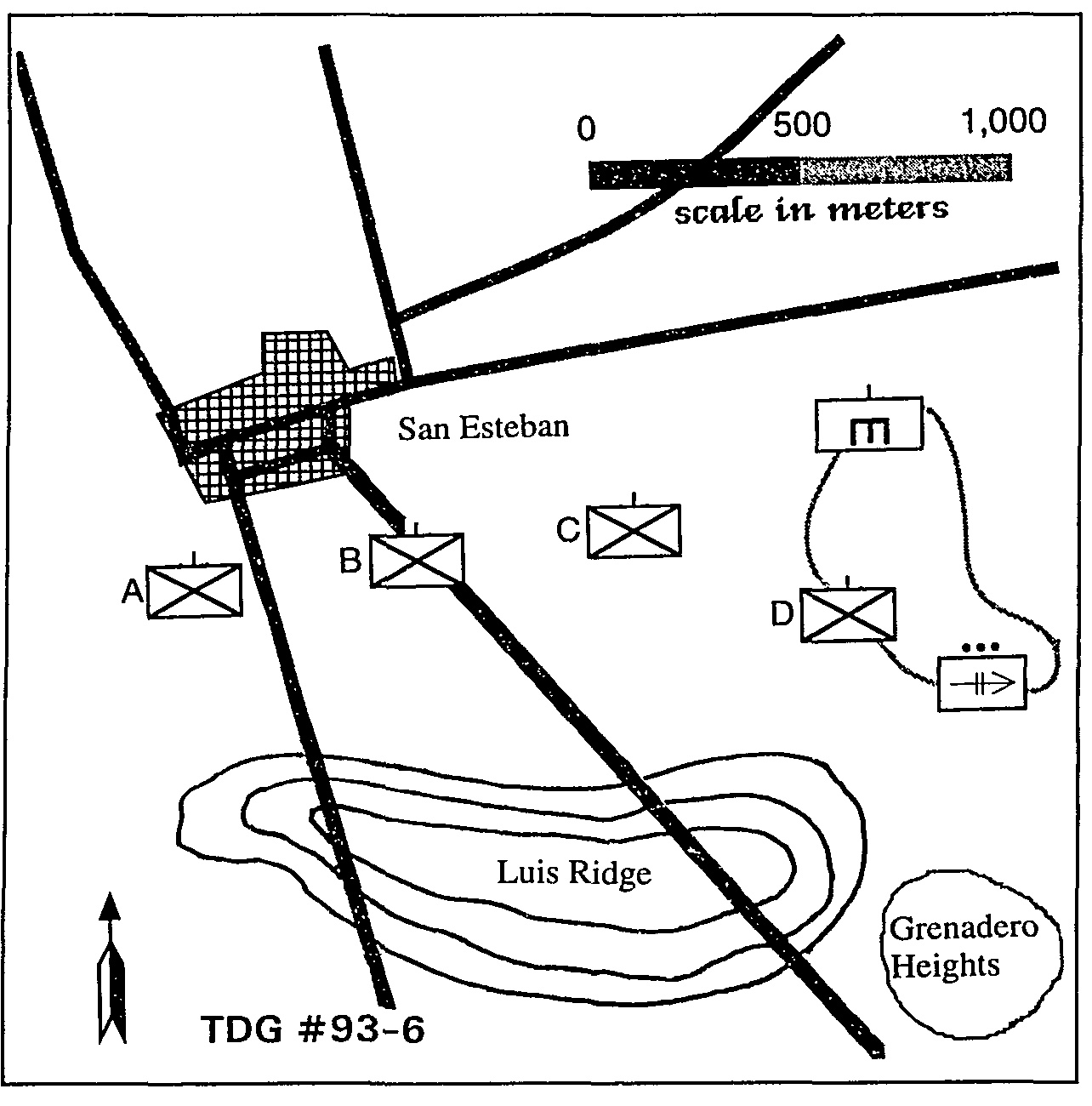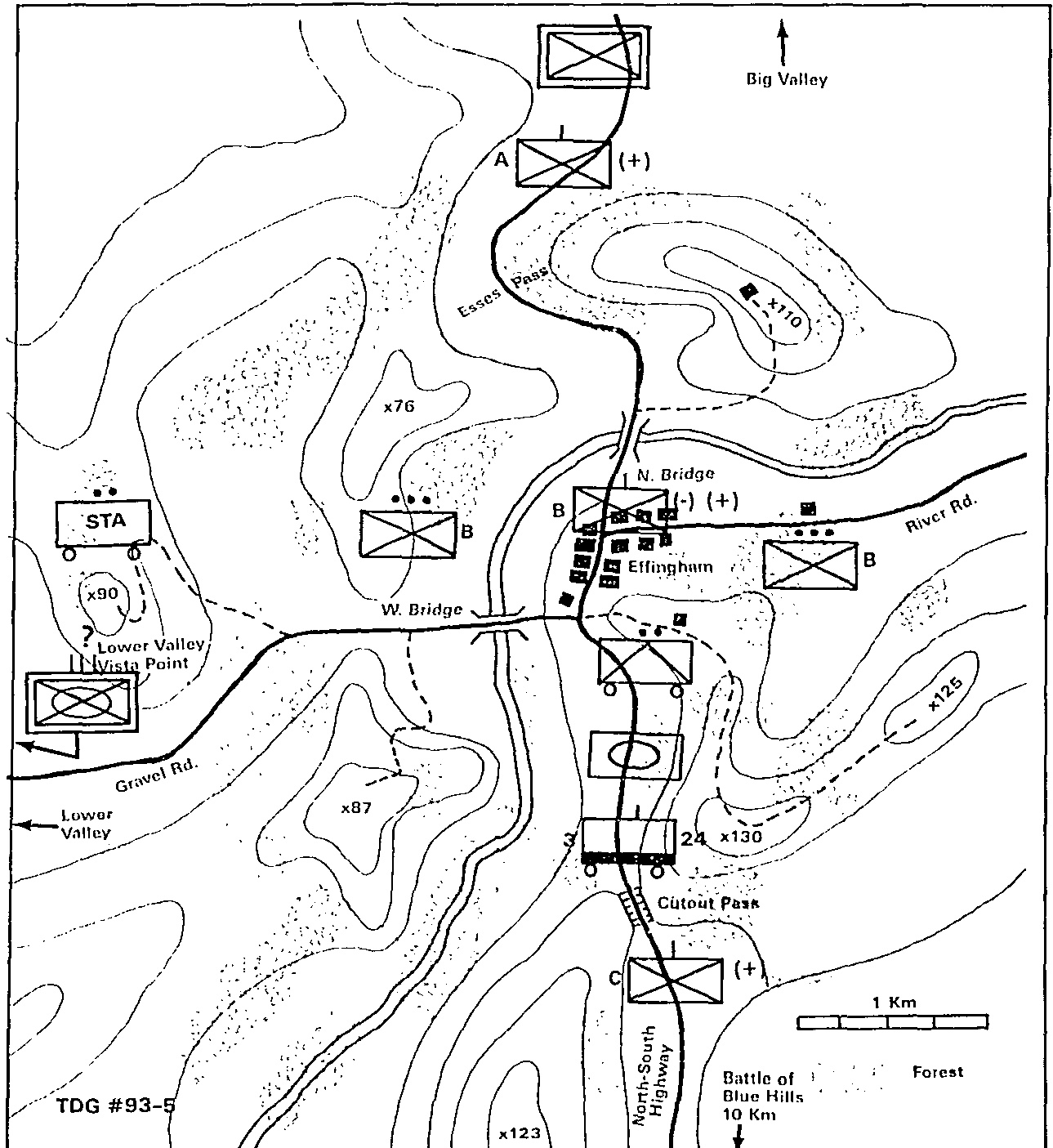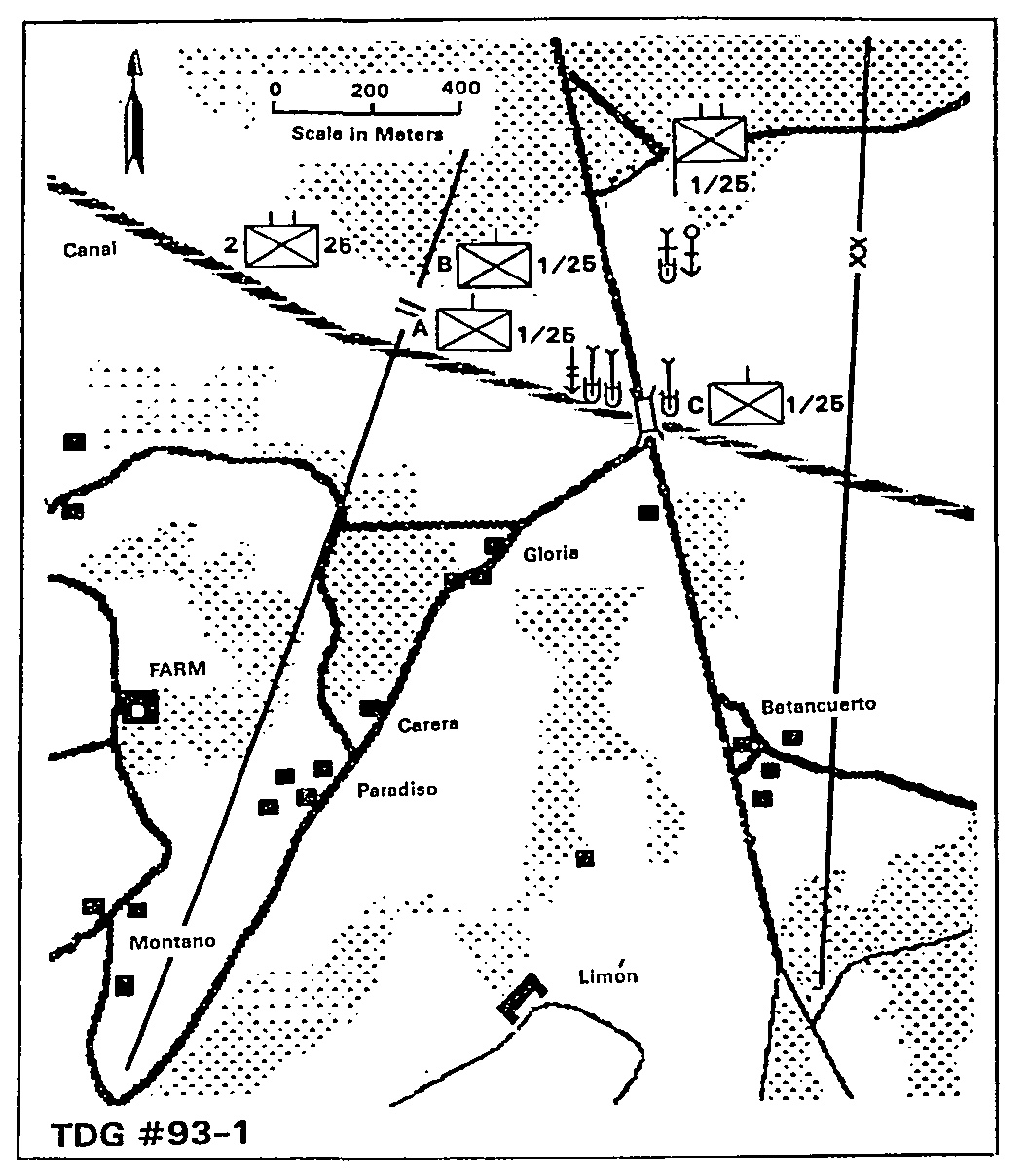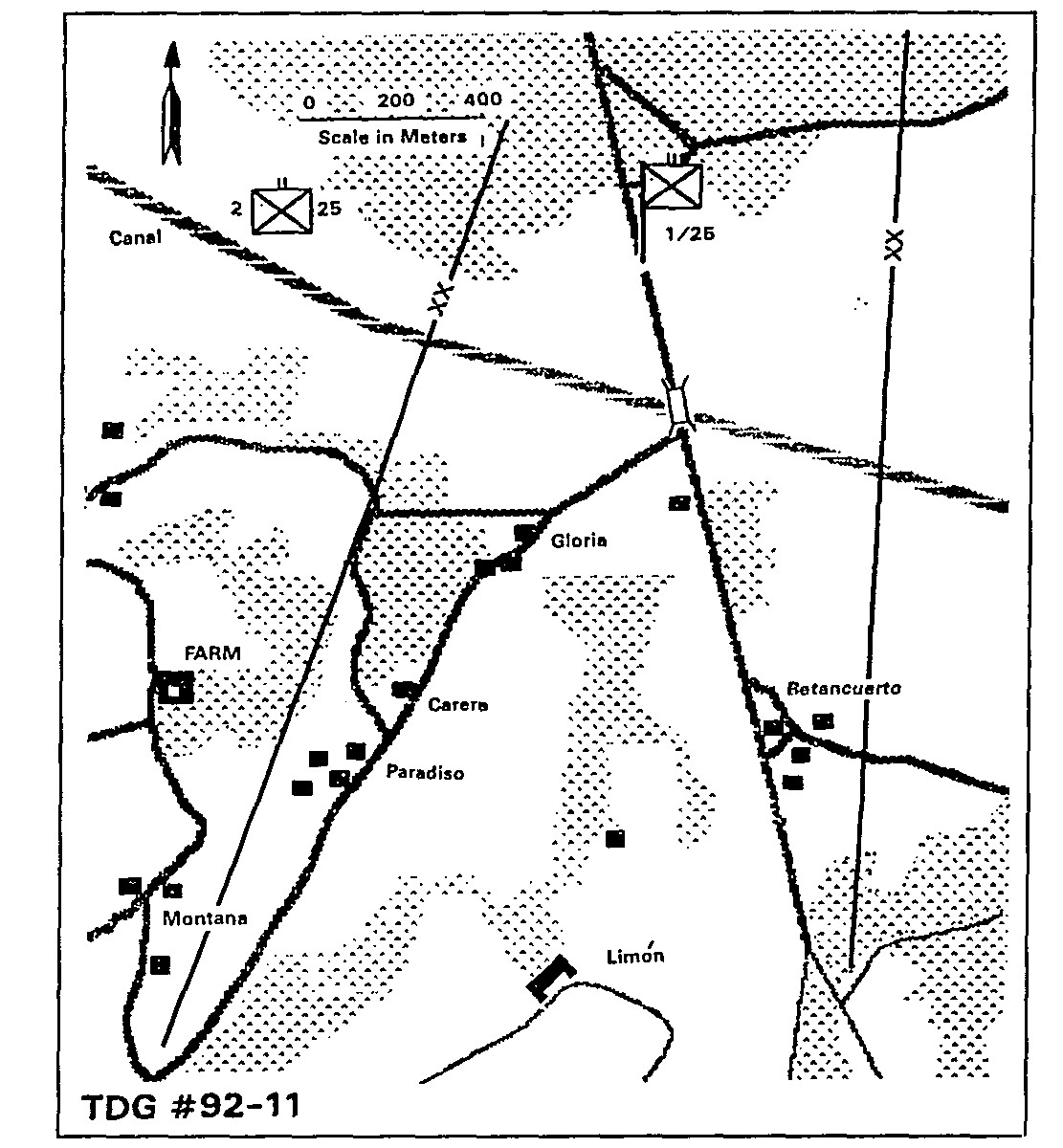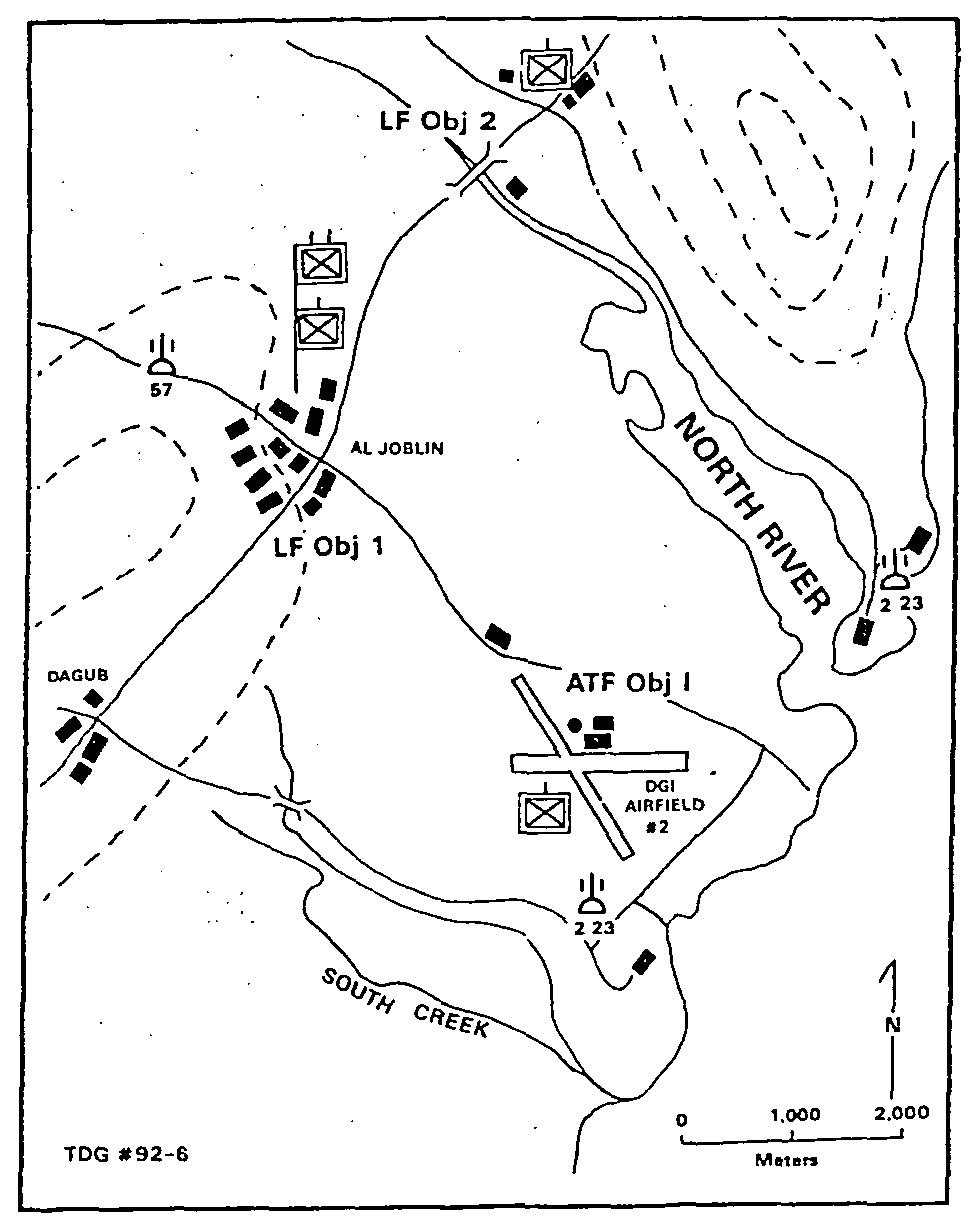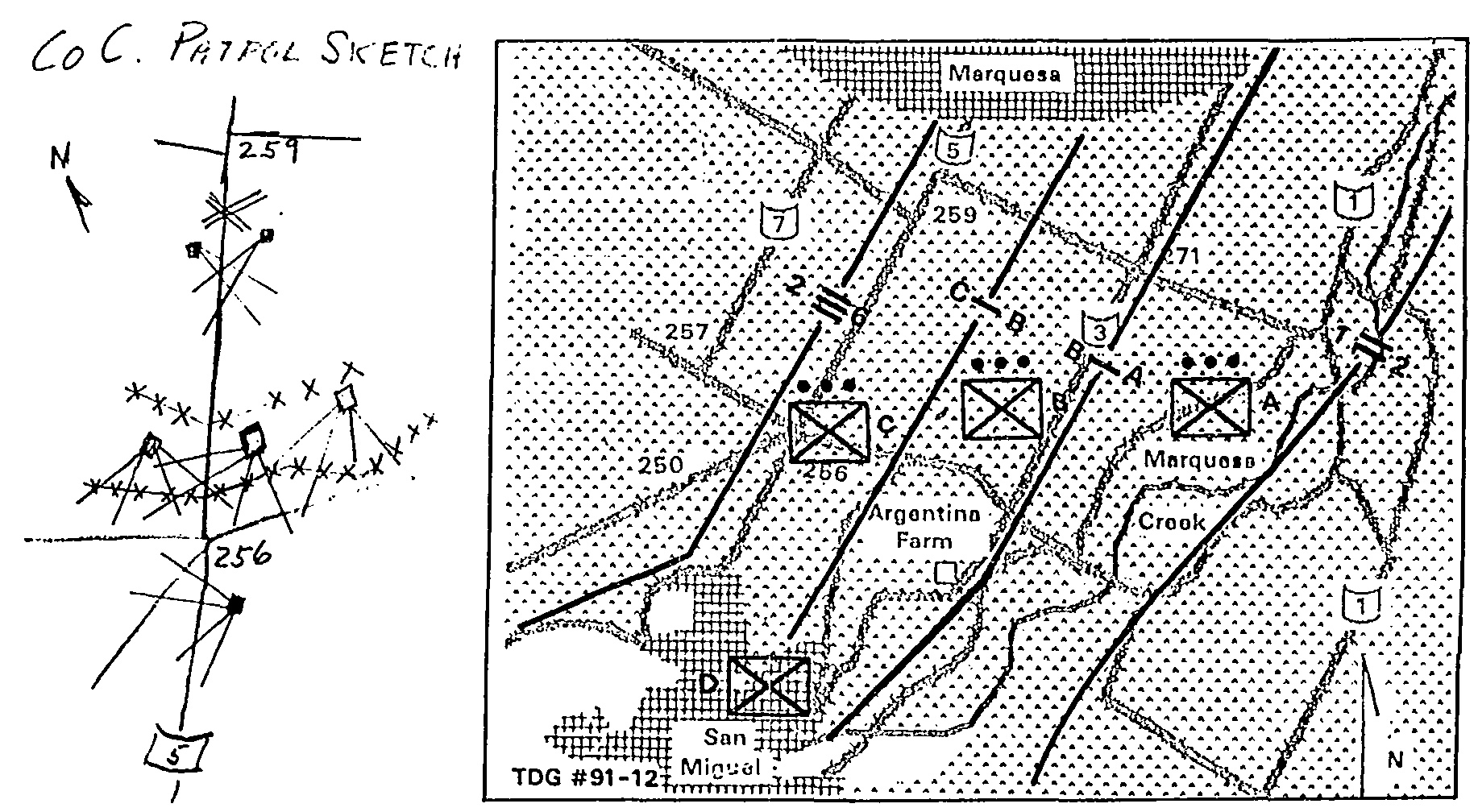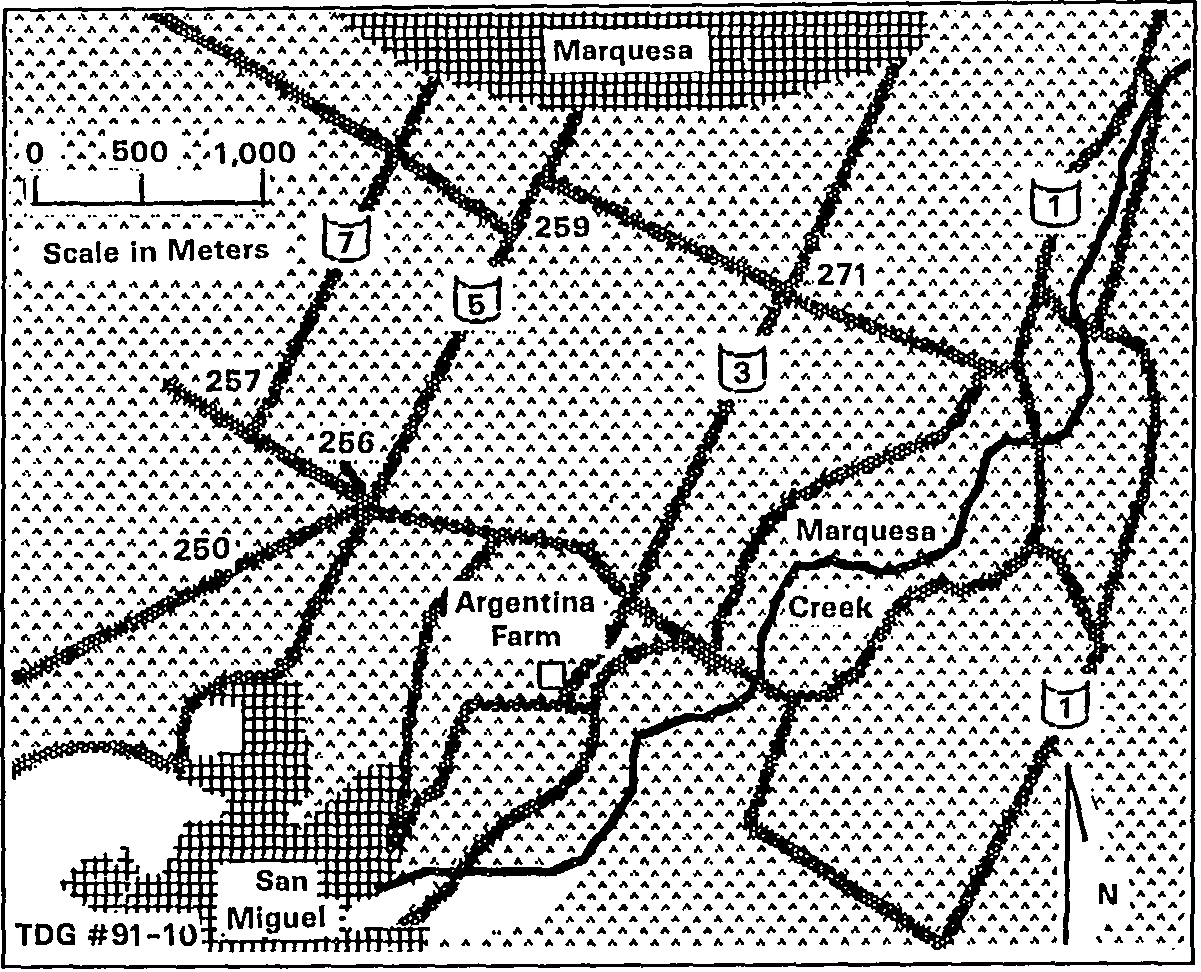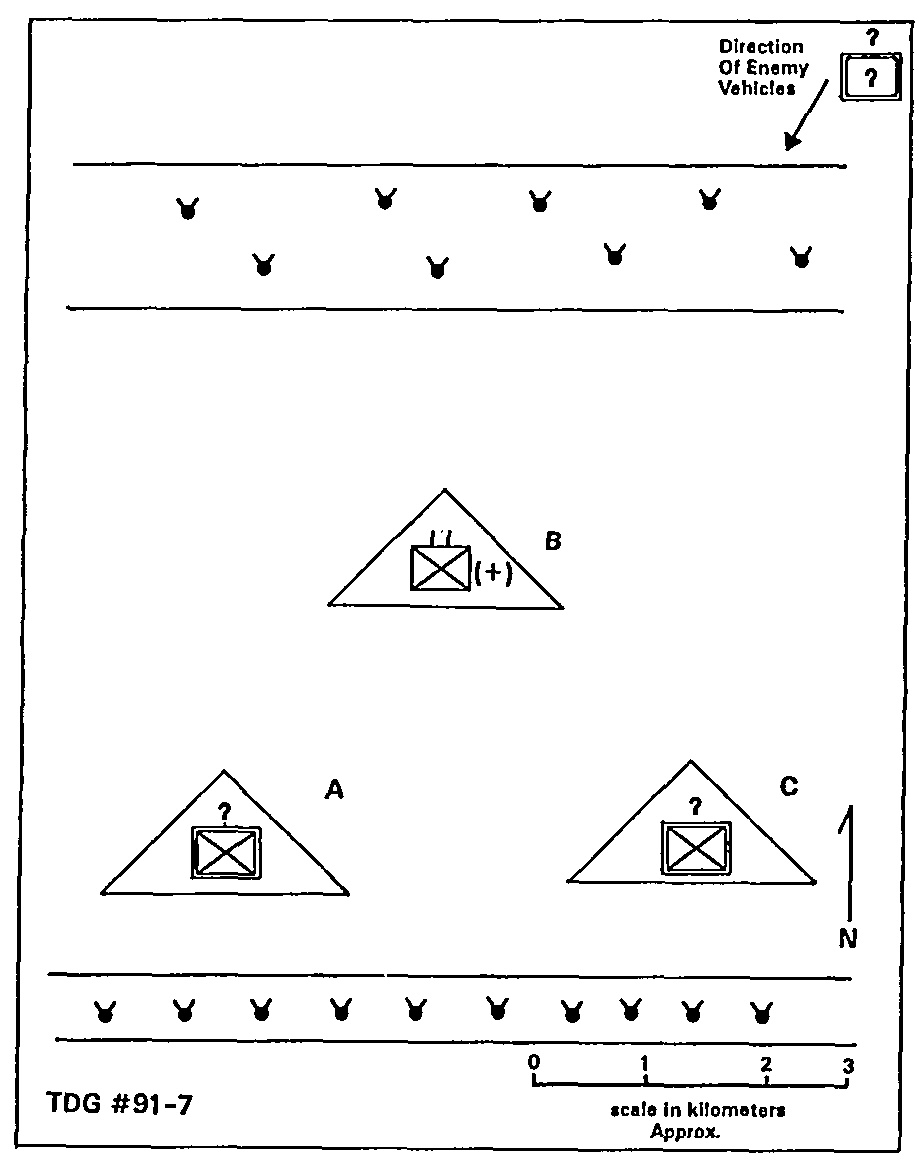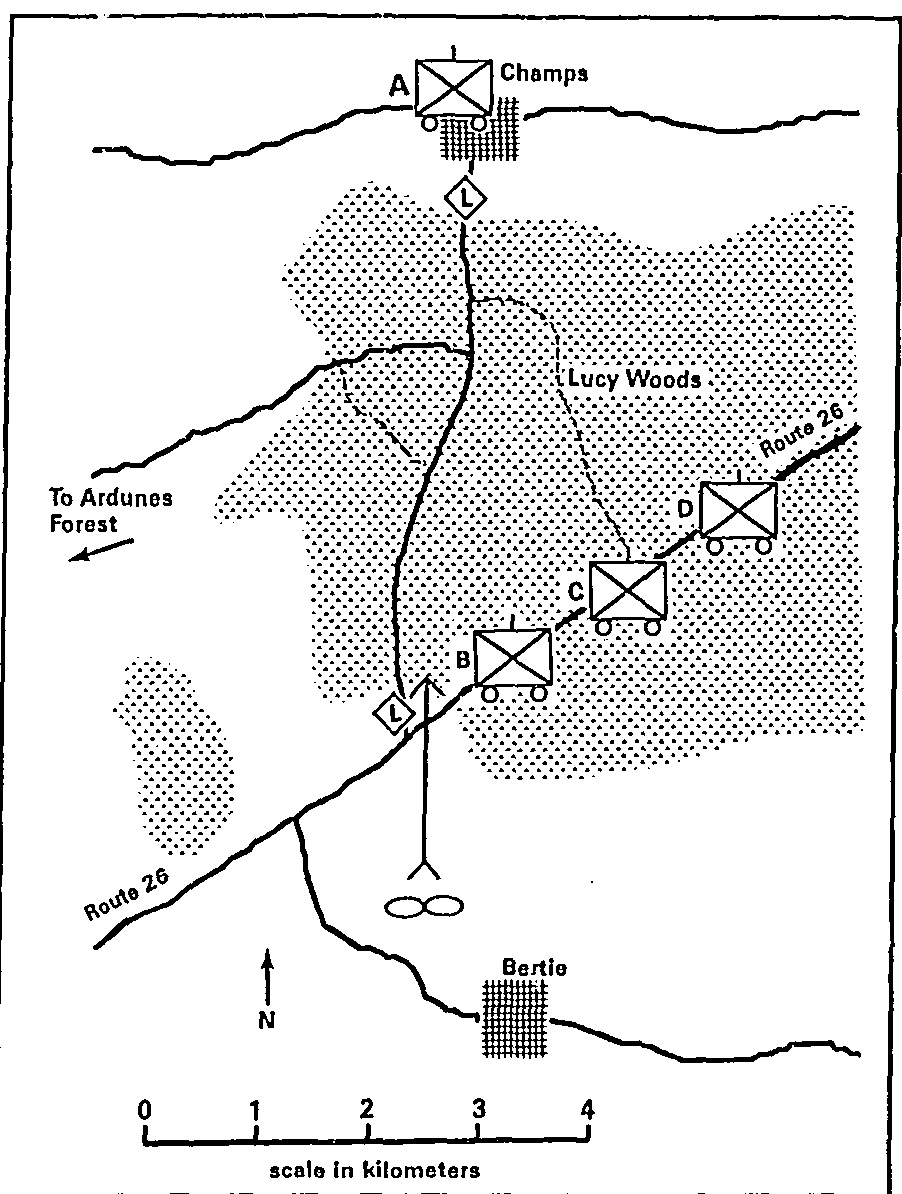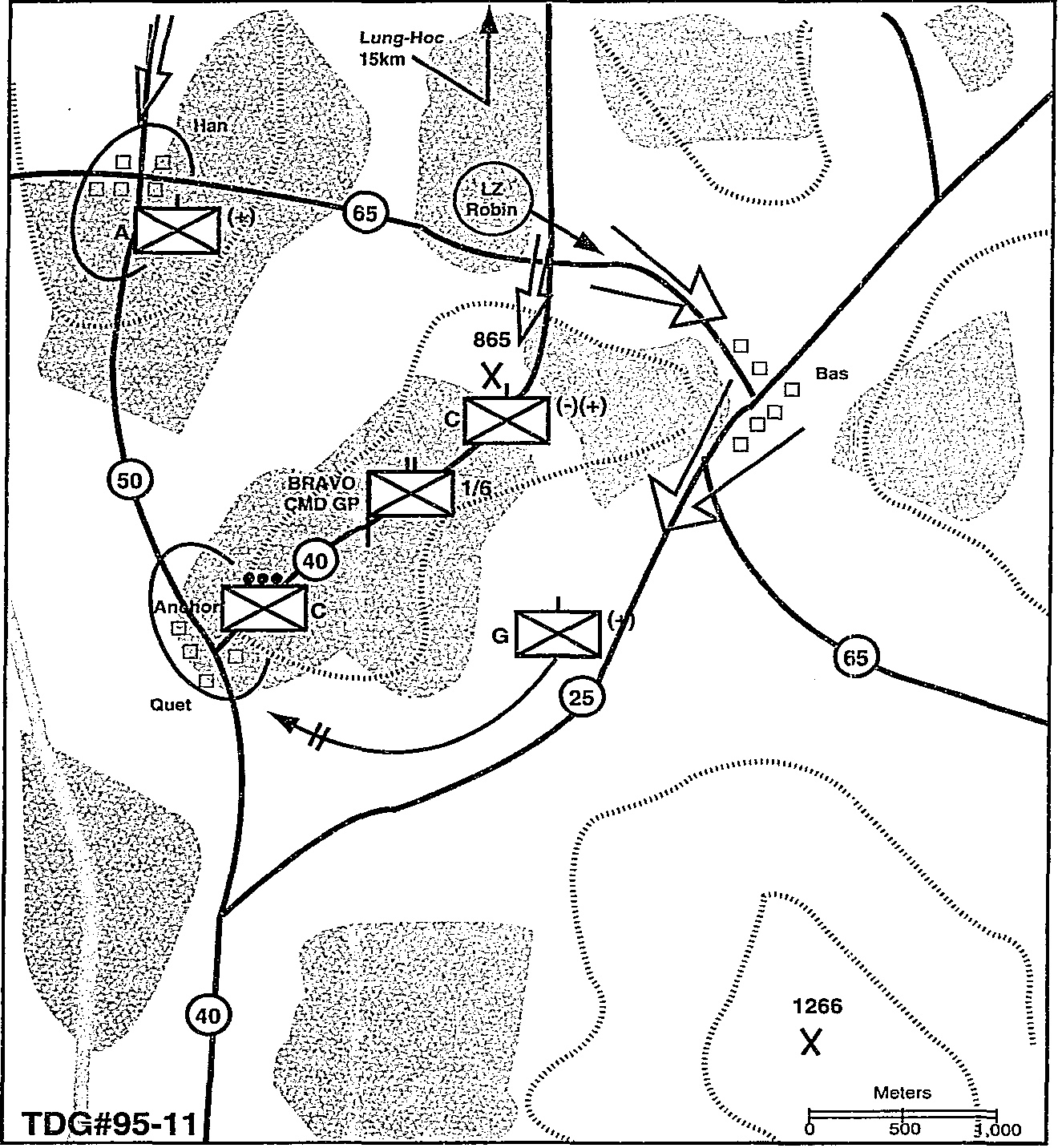 This scenario is the continuation of Tactical Decision Game #95-9, “Hell in a Handbasket,” MCG, Sep95. You are the executive officer of 1st Battalion, 6th Marines. The MEF has made a landing in the enemy rear and is driving west toward the enemy city of Lung-Hoc. Your battalion, reinforced with a company from 2d Battalion, has made a helicopterborne landing 15 kilometers south of Lung-Hoc in the Han-Bas-Quet triangle and has set up a series of blocking positions in order to prevent enemy forces from escaping south out of Lung-Hoc or from reinforcing Lung-Hoc from the south. Each company is reinforced with a section of Dragons and a combined antiarmor team (CAAT) of two TOW vehicles and two heavy machinegun (HMG) vehicles. The battalion is expected to hold its positions until mechanized advance elements of the division arrive within 24-48 hours. Company A, in a blocking position near Han, has sighted enemy activity to the north but has not made contact. Company B, with the battalion commander, was to have landed at Landing Zone (LZ) Robin, but there has been no word from them, and Robin is teeming with enemy activity. Your estimate is that they never made the landing. At Bas, Company G came under heavy attack from two directions and has begun delaying toward Quet. One platoon (callsign “Anchor”) from Company C is holding Quet with the 81mm mortar platoon and has had no enemy contact. The rest of Company C (with your small command group in trace) has moved northeast toward Hill 865 with the object of taking over Company G blocking mission. You can no longer raise the reconnaissance team that had been in the vicinity of Hill 865 and reported the enemy activity around the Rt 65-Rt 40 intersection.
This scenario is the continuation of Tactical Decision Game #95-9, “Hell in a Handbasket,” MCG, Sep95. You are the executive officer of 1st Battalion, 6th Marines. The MEF has made a landing in the enemy rear and is driving west toward the enemy city of Lung-Hoc. Your battalion, reinforced with a company from 2d Battalion, has made a helicopterborne landing 15 kilometers south of Lung-Hoc in the Han-Bas-Quet triangle and has set up a series of blocking positions in order to prevent enemy forces from escaping south out of Lung-Hoc or from reinforcing Lung-Hoc from the south. Each company is reinforced with a section of Dragons and a combined antiarmor team (CAAT) of two TOW vehicles and two heavy machinegun (HMG) vehicles. The battalion is expected to hold its positions until mechanized advance elements of the division arrive within 24-48 hours. Company A, in a blocking position near Han, has sighted enemy activity to the north but has not made contact. Company B, with the battalion commander, was to have landed at Landing Zone (LZ) Robin, but there has been no word from them, and Robin is teeming with enemy activity. Your estimate is that they never made the landing. At Bas, Company G came under heavy attack from two directions and has begun delaying toward Quet. One platoon (callsign “Anchor”) from Company C is holding Quet with the 81mm mortar platoon and has had no enemy contact. The rest of Company C (with your small command group in trace) has moved northeast toward Hill 865 with the object of taking over Company G blocking mission. You can no longer raise the reconnaissance team that had been in the vicinity of Hill 865 and reported the enemy activity around the Rt 65-Rt 40 intersection.
The leading elements of Charlie Company crest Hill 865. Below you to the east you can see and hear Golf Company delaying along Route 25. From what has been reported and the sounds of things you estimate there is at least a mechanized battalion advancing down Rt 25. Charlie Company reports a steady flow of enemy forces (“dozens of vehicle lights”) heading south on Route 40 through LZ Robin and then east into Bas. Alpha reports that it is being probed by enemy patrols from the north. You hear small arms fire from over the crest of Hill 865, and Charlie Company reports that it has driven off what seems to be an enemy combat patrol moving up the north slope.
What now, Major?
Requirement
In a time limit of 5 minutes prepare the frag orders you will issue and any reports/requests you will make. Then provide a sketch and a short explanation of your decision. Send your solution to Marine Corps Gazette, TDG #95-11, P. O. Box 1775, Quantico, VA 22134 or fax (703) 640-0823.
For more detailed information on the structure of Marine Corps units, Marine Corps equipment, and symbols used in TDG sketches, see MCG, Oct94, pp. 53-56 and the modification reported in Jan95, p. 5.


